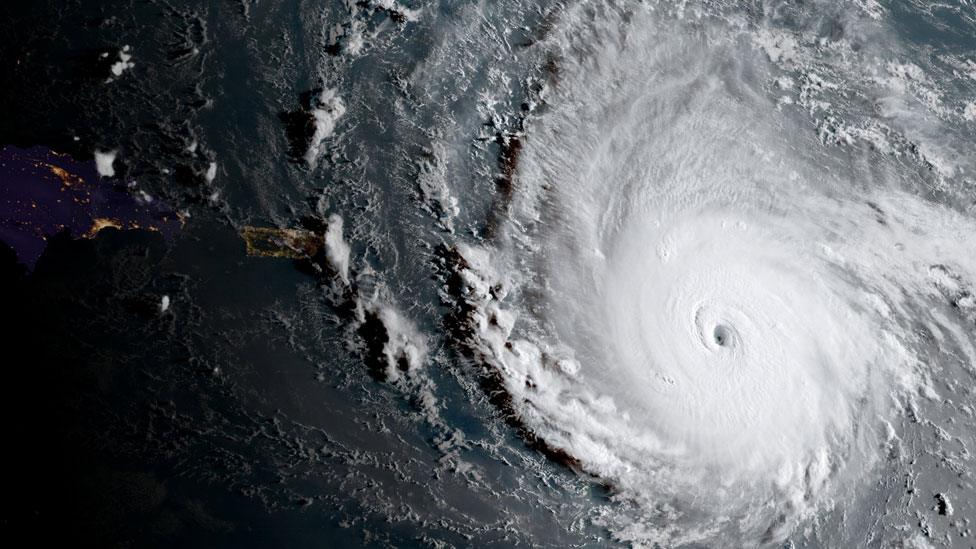Hurricane Ian - Maps and images showing destruction
- Published

Hurricane Ian - one of the most powerful storms to hit the United States in recent years - has caused widespread disruption after barrelling across the Caribbean into Florida.
Local reports say thousands of people are awaiting rescue and at least 20 people have died - with fears that number may rise. Satellite analysis suggests more than 80,000 properties have been affected by flood waters.
Ian was downgraded to a tropical storm after making landfall in Florida but as it moved into the Atlantic Ocean it regained its hurricane strength and is heading for South Carolina and Georgia - where some people have fled low-lying areas for higher ground and other communities are braced for strong winds, heavy rains and flooding.

The storm hit Cuba as a strengthening hurricane on 27 September then built to a Category 4 hurricane as it crossed the Gulf of Mexico, bringing wind speeds of up to 241km/h (150mph) and causing storm surges, or rising sea levels, which flooded coastal communities and left thousands of people without power.
Florida Governor Ron DeSantis described the destruction as a "500-year flood event".
"We've never seen storm surge of this magnitude," he said.
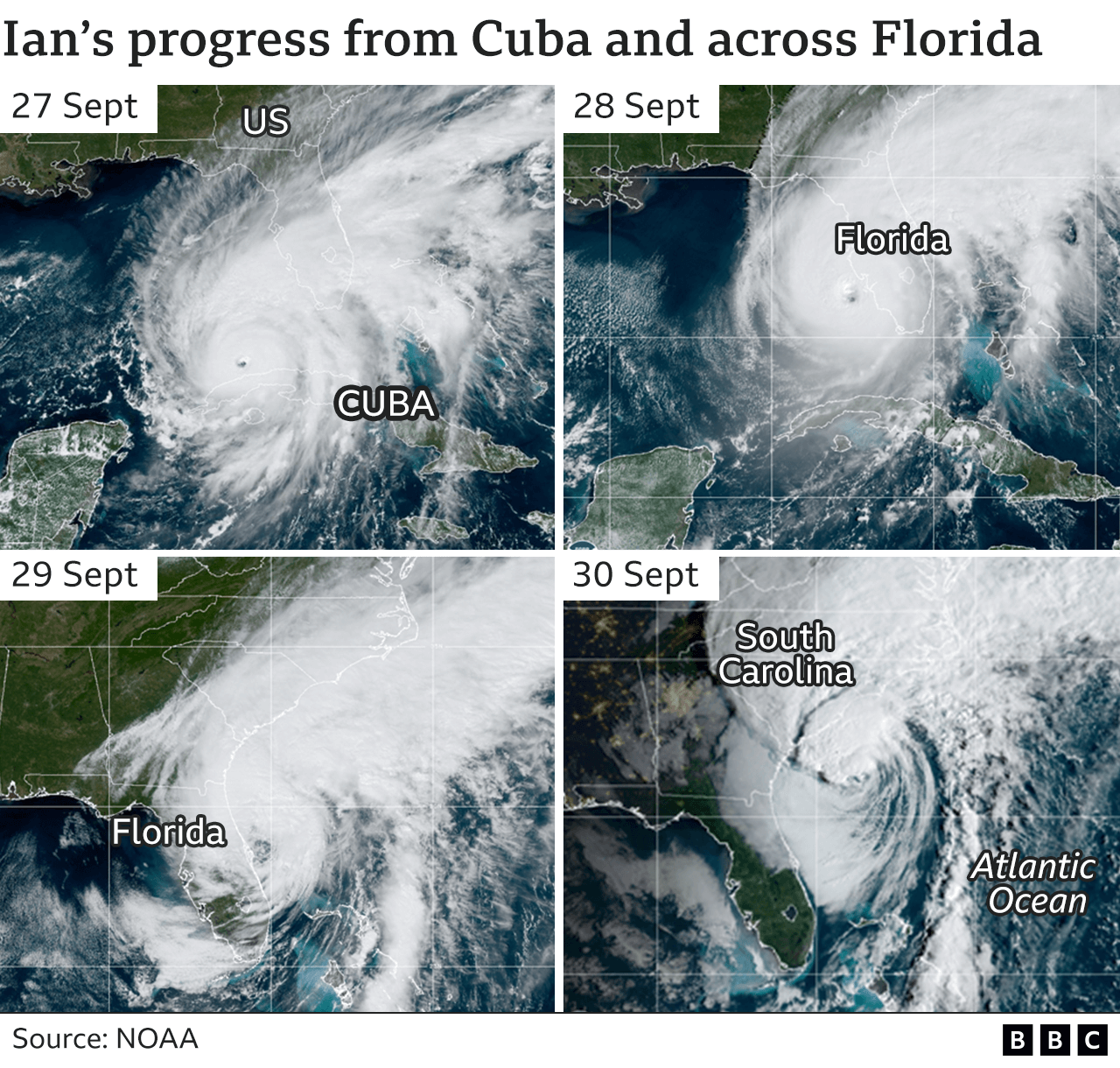
The National Hurricane Center (NHC) has warned of further life-threatening surges in the storm's wake.
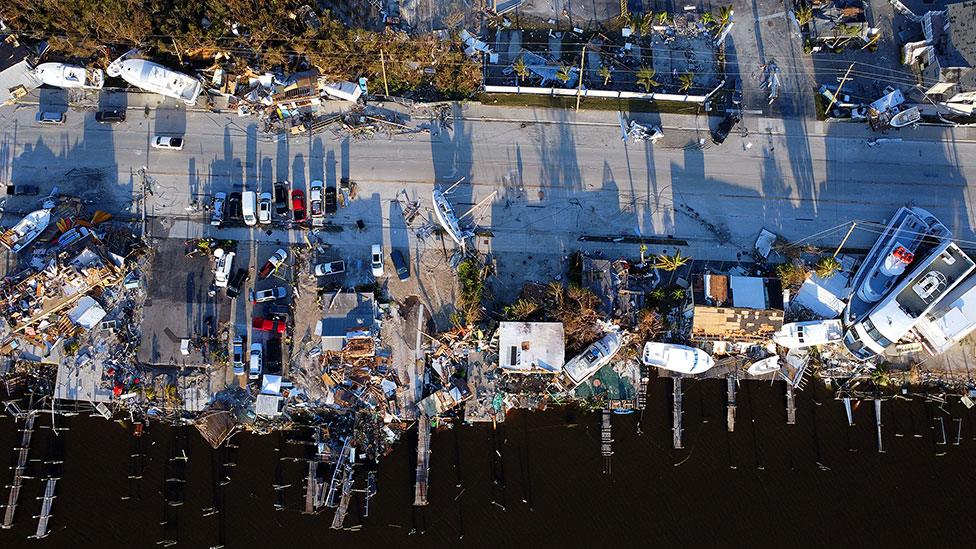
Communities in the Fort Myers areas took the brunt of the storm as it made landfall. Businesses and homes have been destroyed by the winds and flooding as well as vital road links - with thousands of people on Sanibel Island and Pine Island left isolated after causeways to the mainland were swept away.

Streets were flooded by water from rivers and a surge of sea water driven by the storm. As Ian moved inland, it brought 25cm to 50cm (10 to 20 inches) of rainfall in some areas.

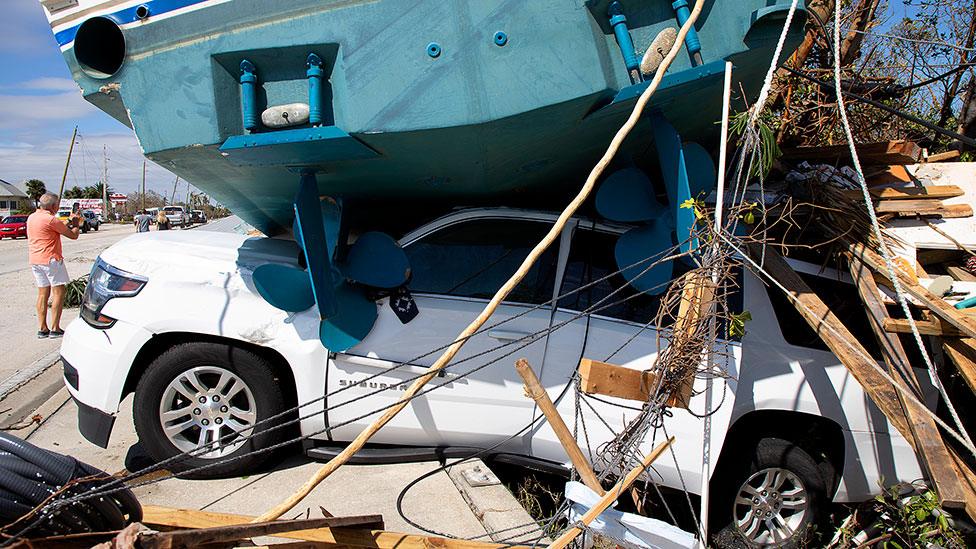
Dan Allers, a councillor in Fort Myers Beach, said the surge of water was about 12-14 feet (3.7-4.3m).
"To say it's devastation would be a severe understatement, just watching people's belongings and homes and things float by - it was a very tough scene to witness," he told the BBC.

Rescue efforts by boat and helicopter are under way to reach people stranded by the floodwaters.
Satellite analysis shows more than 5,500 buildings affected by floods in Naples, according to ICEYE Flood Solutions.
Firefighters in the town had to wade through chest-high waters to rescue people, including one woman who was stranded in her car.
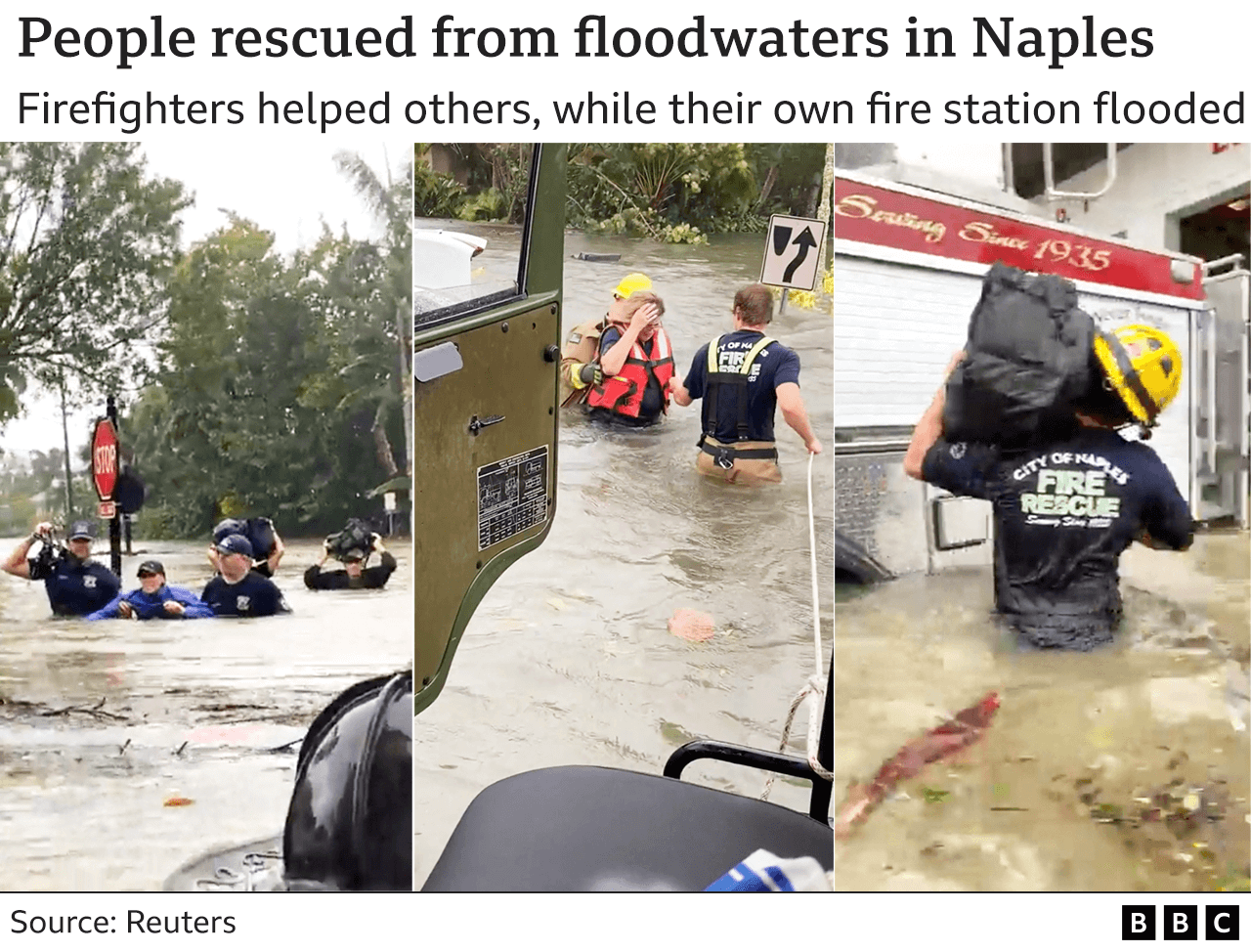
Storm surges
Storm surges are caused when huge volumes of water are pushed by hurricane-force winds. When they meet land, the water surges inshore at levels far exceeding normal tides. If the coast has wide, shallow continental shelf, like the one along Florida's Gulf Coast, the surge can be much worse.

Power out in Cuba
Before Ian reached the Florida coast it had swept across Cuba, knocking out electricity pylons, flattening homes and causing widespread damage as it crossed the west of the island on Tuesday.
At least three people died, according to state media. Millions were left without electricity or communications for three days before power started to be restored in some areas.
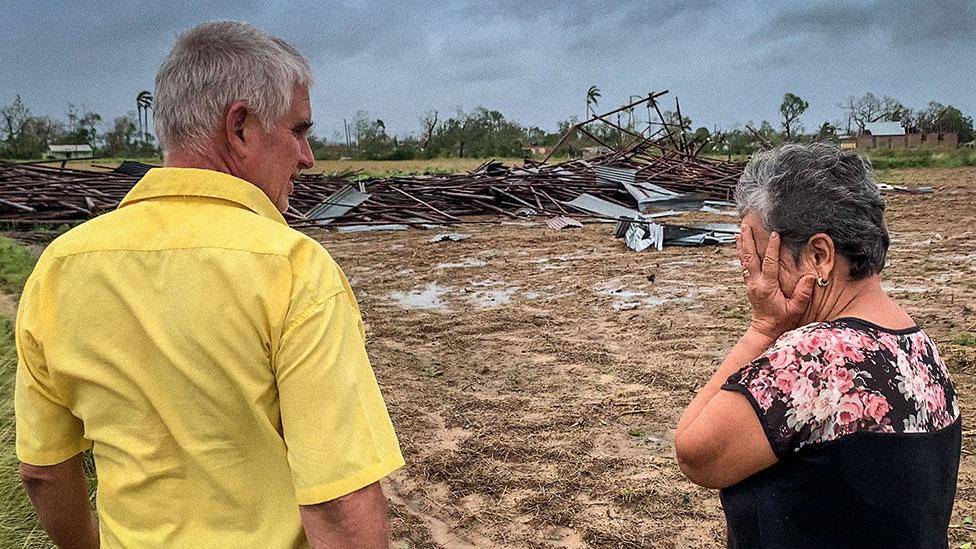

Hurricane season
Florida is no stranger to powerful hurricanes and some of the biggest the US has seen have passed across the state.
The warm water of the Gulf Stream - a fast-moving ocean current that travels north along the east coast of Florida - makes for ideal conditions for a hurricane, says Hugh Willoughby, a meteorology professor at Florida International University.
"Hurricanes derive their energy from warm ocean water and the Gulf Stream is sort of the warmest ocean water around," he told the BBC.
In 2004, Hurricane Charley became a Category 4 hurricane just before hitting Florida's Gulf Coast. Nine died and the storm caused an estimated $6.8 billion in damage, according to the NHC.

In 2017, Hurricane Irma passed over the Florida Keys as a Category 4 hurricane but at times reached a Category 5, with winds of up to 295km/h (185mph).
Irma left path of a devastation across Caribbean countries and territories before moving up through the US states of Florida, Georgia and South Carolina - an estimated 1.2 million people were affected and about 55 people died.
Hurricane Ian reached Category 4 - when severe damage to property is expected.

Related topics
- Published28 August 2023
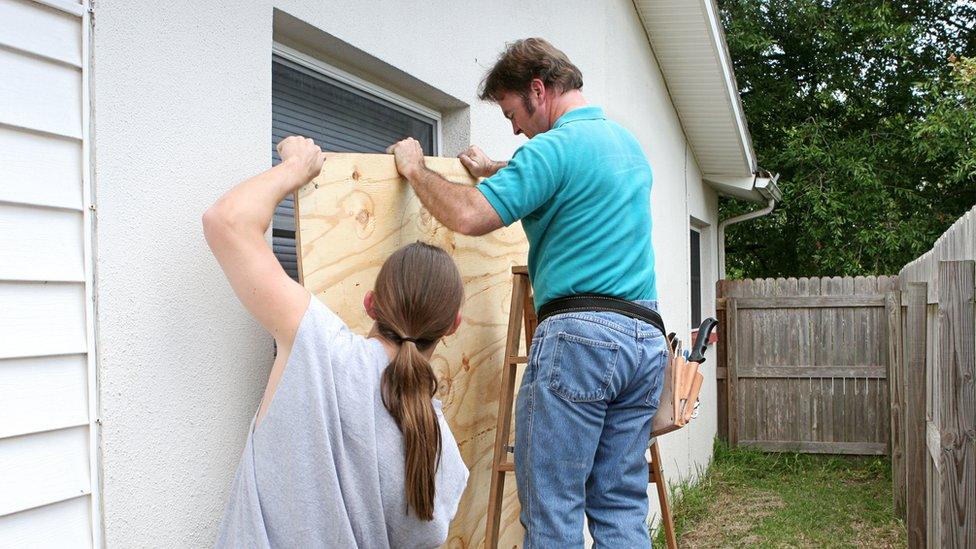
- Published27 September 2022
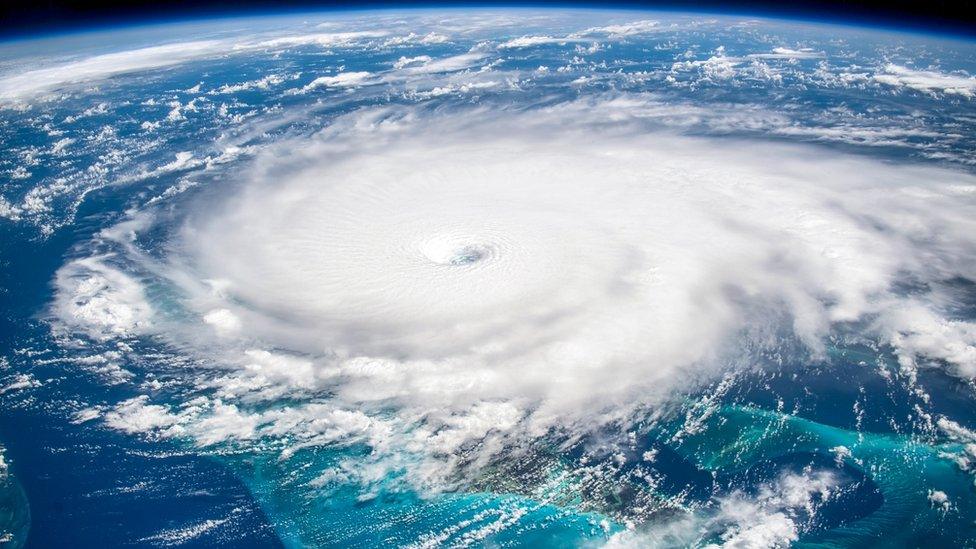
- Published16 September 2020
